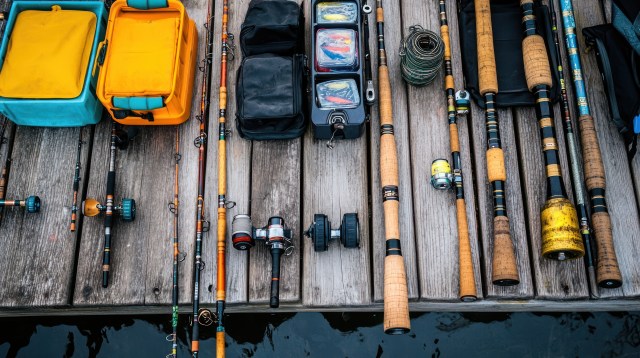Baitcasting Reels Explained: Advantages and Disadvantages for Anglers
When it comes to fishing gear, choosing the right reel can significantly impact your success on the water. Among the most popular types of reels are spinning reels and baitcasting reels. Each has its unique features, advantages, and disadvantages. In this article, we will delve into baitcasting reels specifically, exploring their pros and cons to help anglers decide if they are the right choice for their fishing style.
Understanding Baitcasting Reels
Baitcasting reels are designed for precision casting and greater control over line management. These reels feature a revolving spool that allows anglers to cast heavier lures with accuracy. They are commonly used in freshwater fishing for species like bass and pike but can also be effective in saltwater scenarios. Their design helps provide better line control which is essential when working with larger fish.

Advantages of Baitcasting Reels
One of the primary advantages of baitcasting reels is their ability to handle heavier lines and lures effectively. This makes them suitable for targeting larger fish that require a stronger setup. Additionally, baitcasters offer superior casting distance due to their design which minimizes backlash during casts when used correctly. They also provide greater torque during retrievals, making it easier to reel in larger catches while maintaining control over your lure’s action in the water.
Disadvantages of Baitcasting Reels
Despite their advantages, baitcasting reels come with some drawbacks that anglers should consider. They can be more challenging to master compared to spinning reels, especially for beginners who may struggle with backlashes—misalignments that occur when the line unwinds from the spool too quickly during casting. Moreover, baitcasters typically require more maintenance than spinning setups due to their complex mechanisms.
Who Should Use Baitcasting Reels?
Baitcasting reels are ideal for experienced anglers looking for precision and power in their fishing technique. If you often target larger species or require specific lure actions that benefit from a controlled retrieve, then a baitcaster may be suitable for you. However, beginners might find starting out on a spinning reel easier before transitioning into baitcasters as they gain more experience.
Conclusion: Choosing Between Spinning and Baitcasting Reels
Ultimately, whether you choose a baitcasting reel or stick with a spinning reel depends on your personal preferences as an angler and your specific fishing needs. Both types have unique advantages suited for different situations; understanding these will enhance your fishing experience significantly. Before making any decisions at the tackle shop, consider factors such as your skill level, type of fish targeted, and preferred techniques.
In summary, while baitcasting reels offer several benefits such as increased accuracy and control over heavier lines—ideal features when targeting bigger species—they may not be suited for everyone right off the bat due to learning curves involved. Evaluate what works best based on where you fish most often.
This text was generated using a large language model, and select text has been reviewed and moderated for purposes such as readability.


